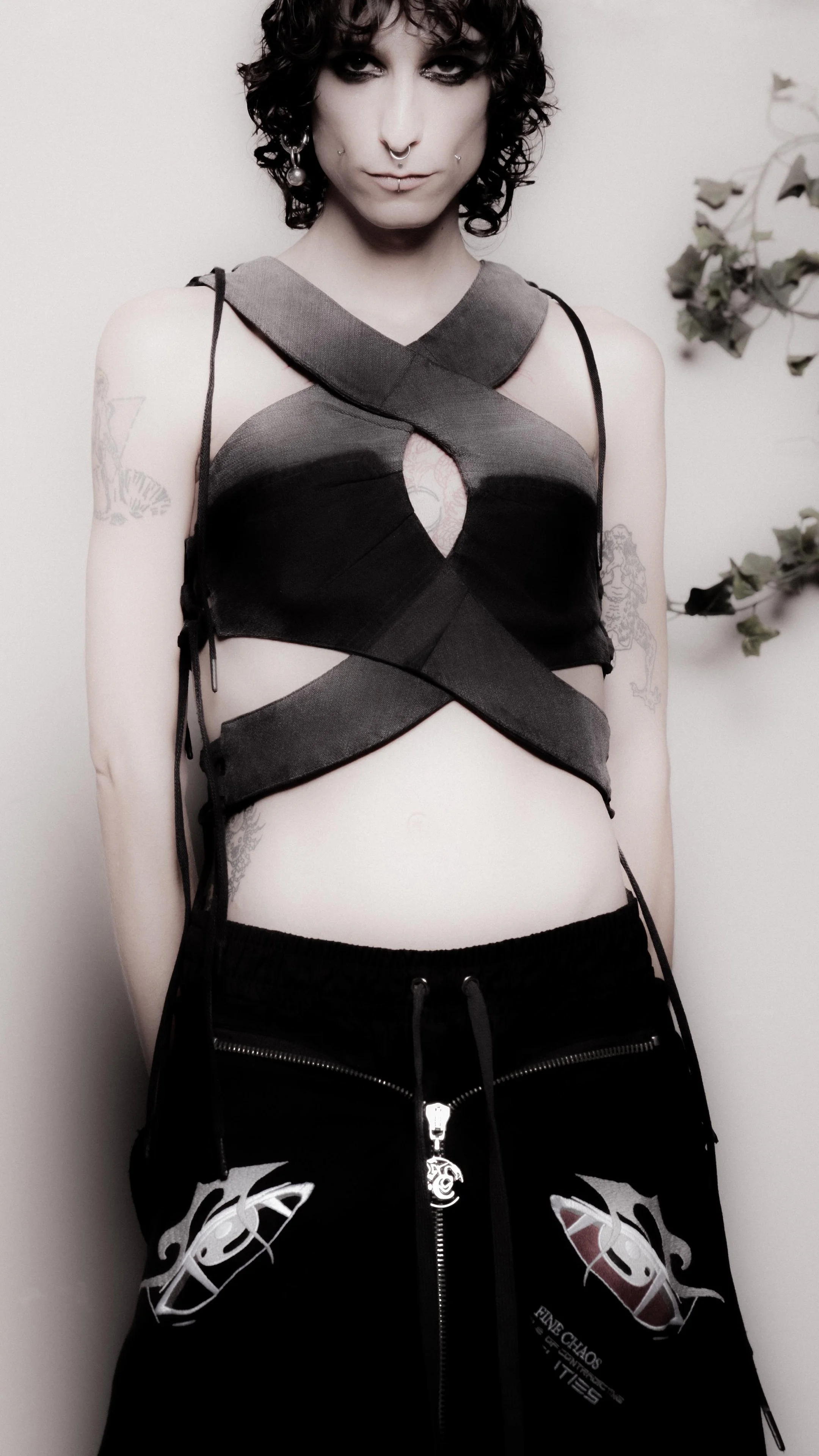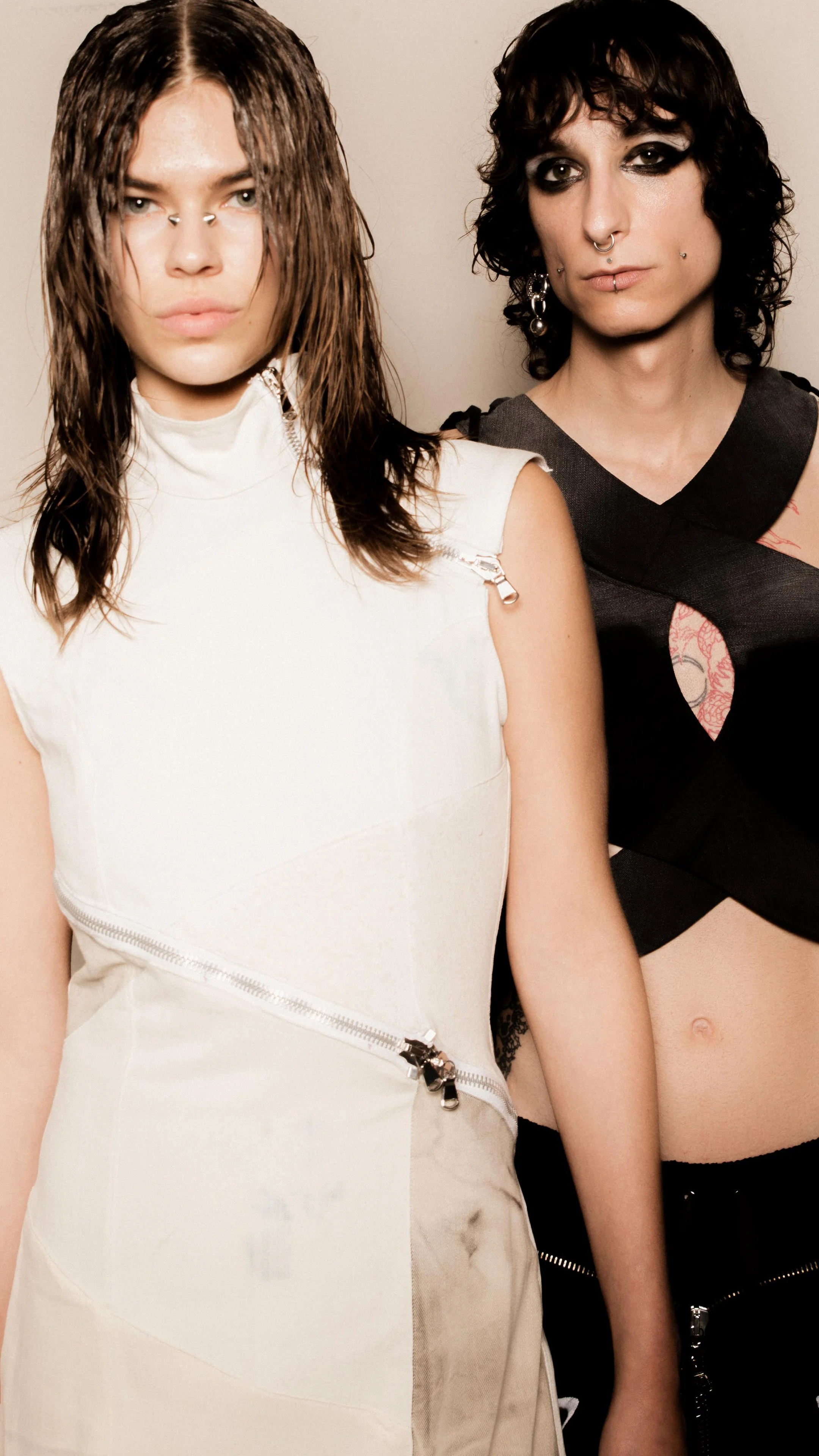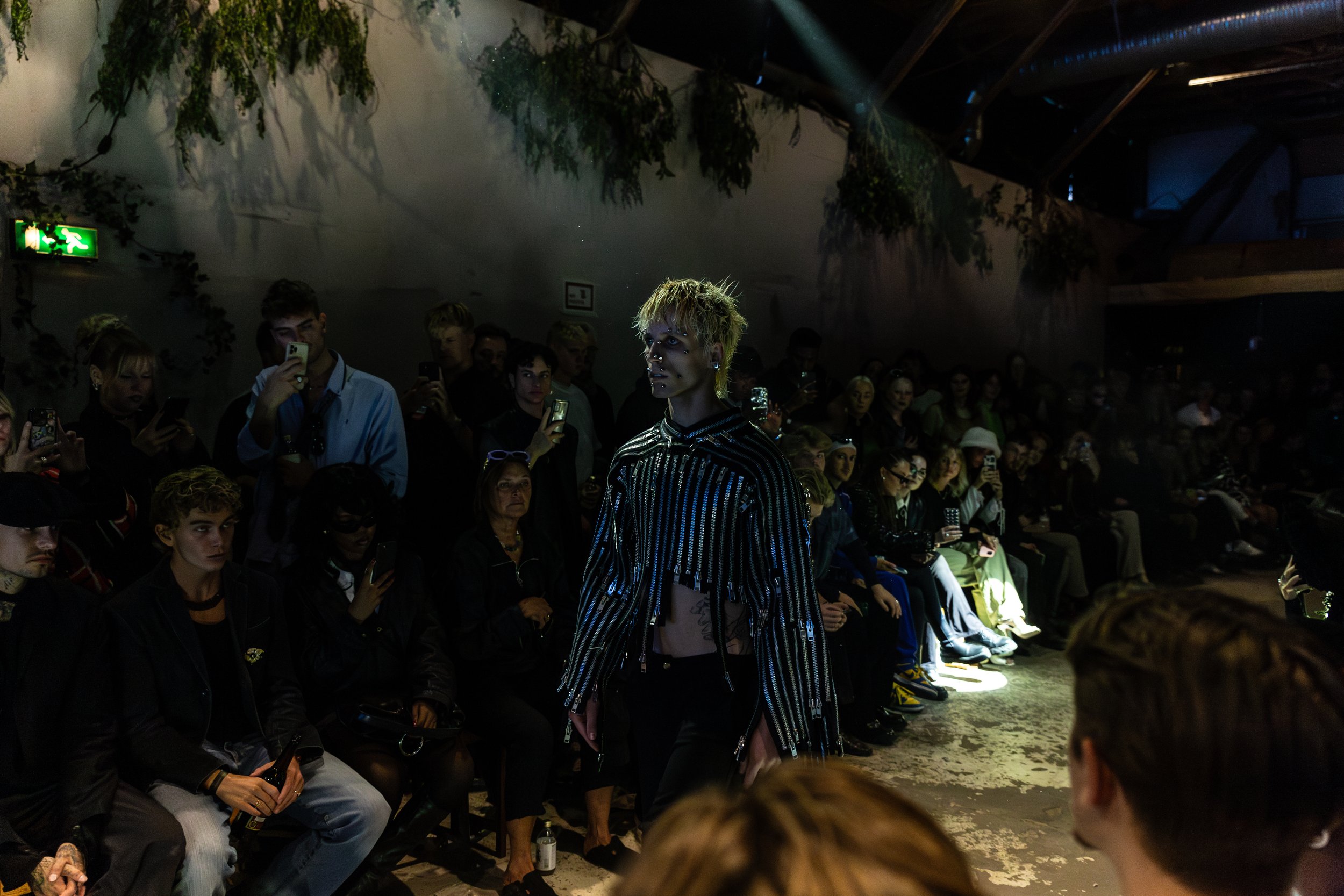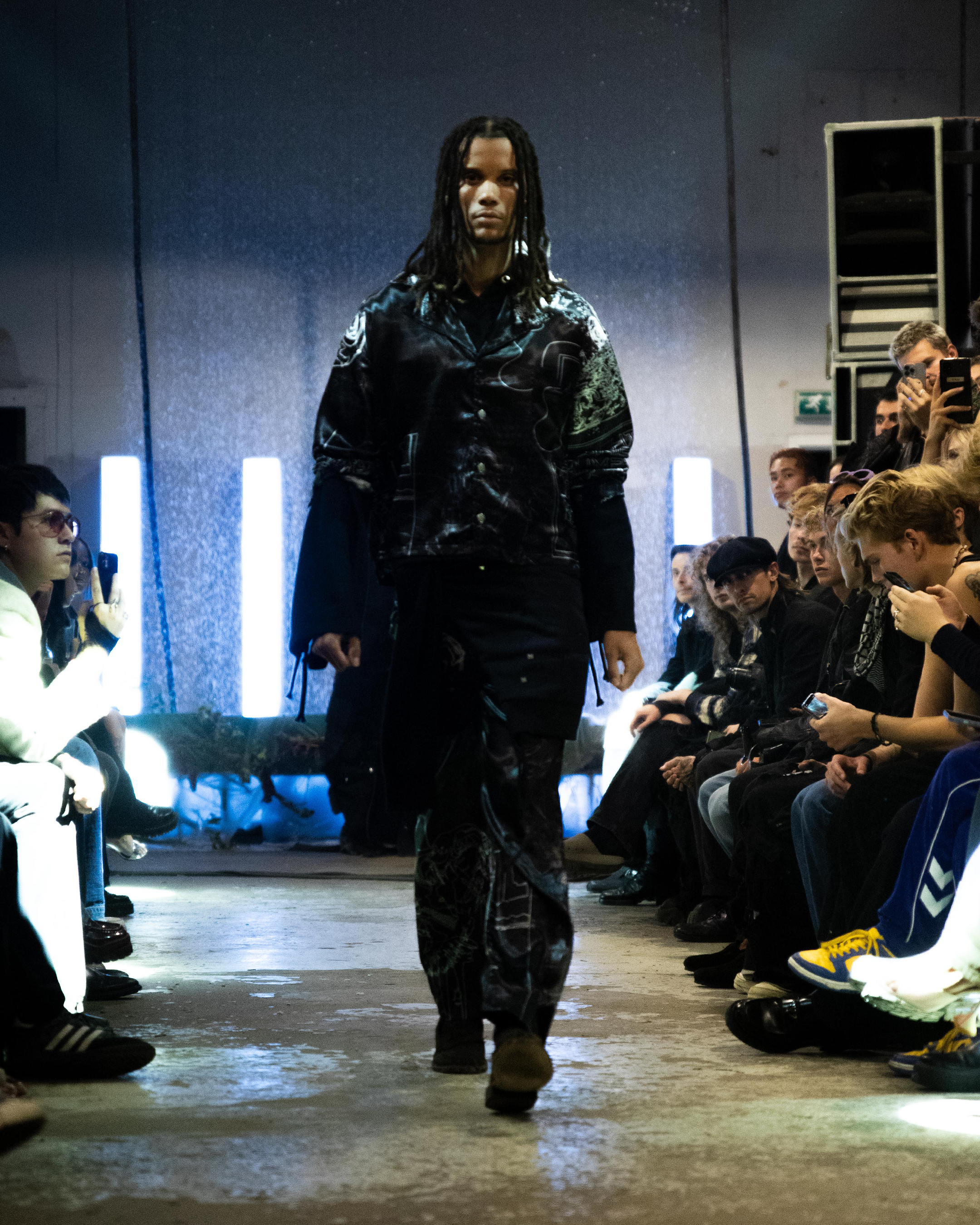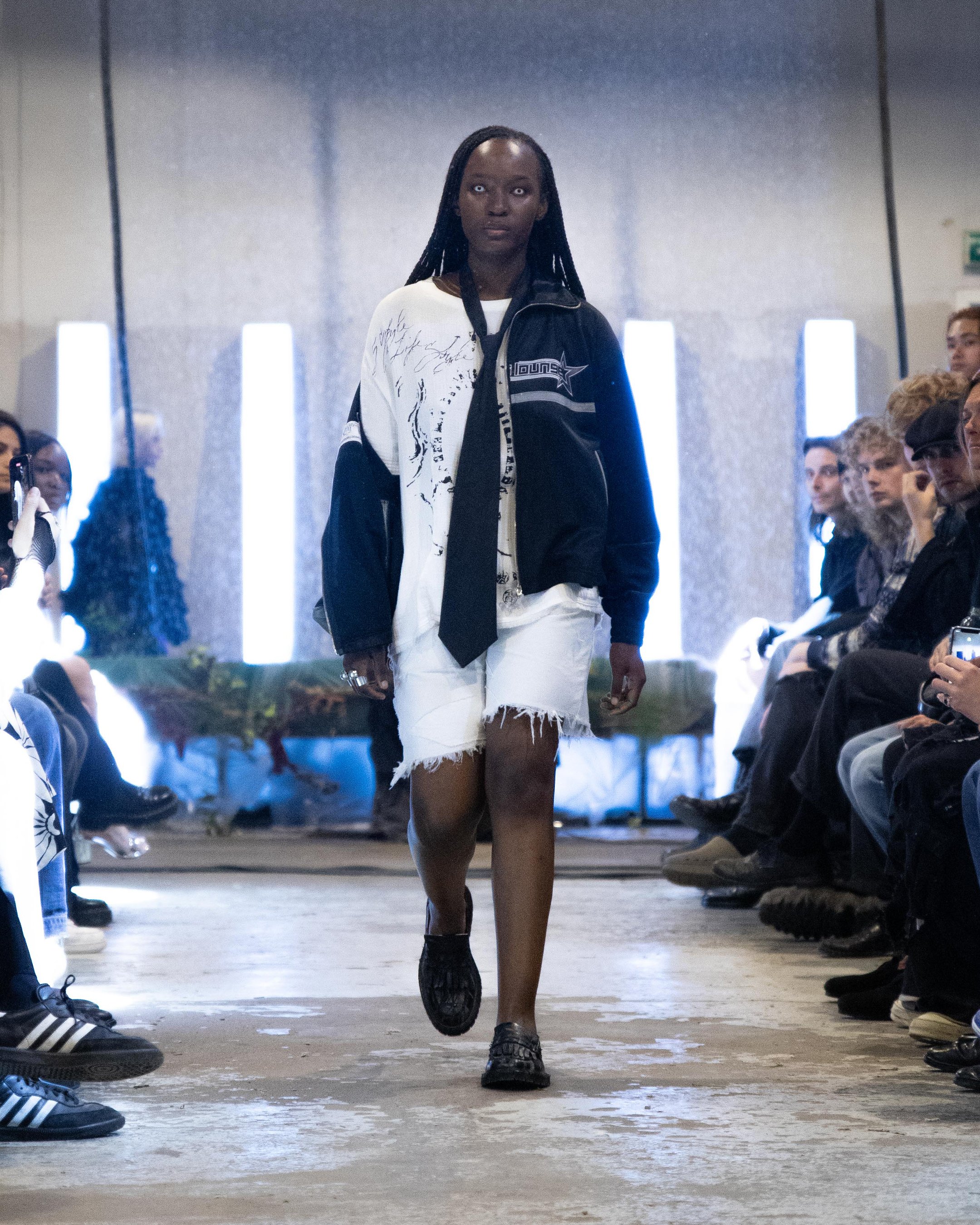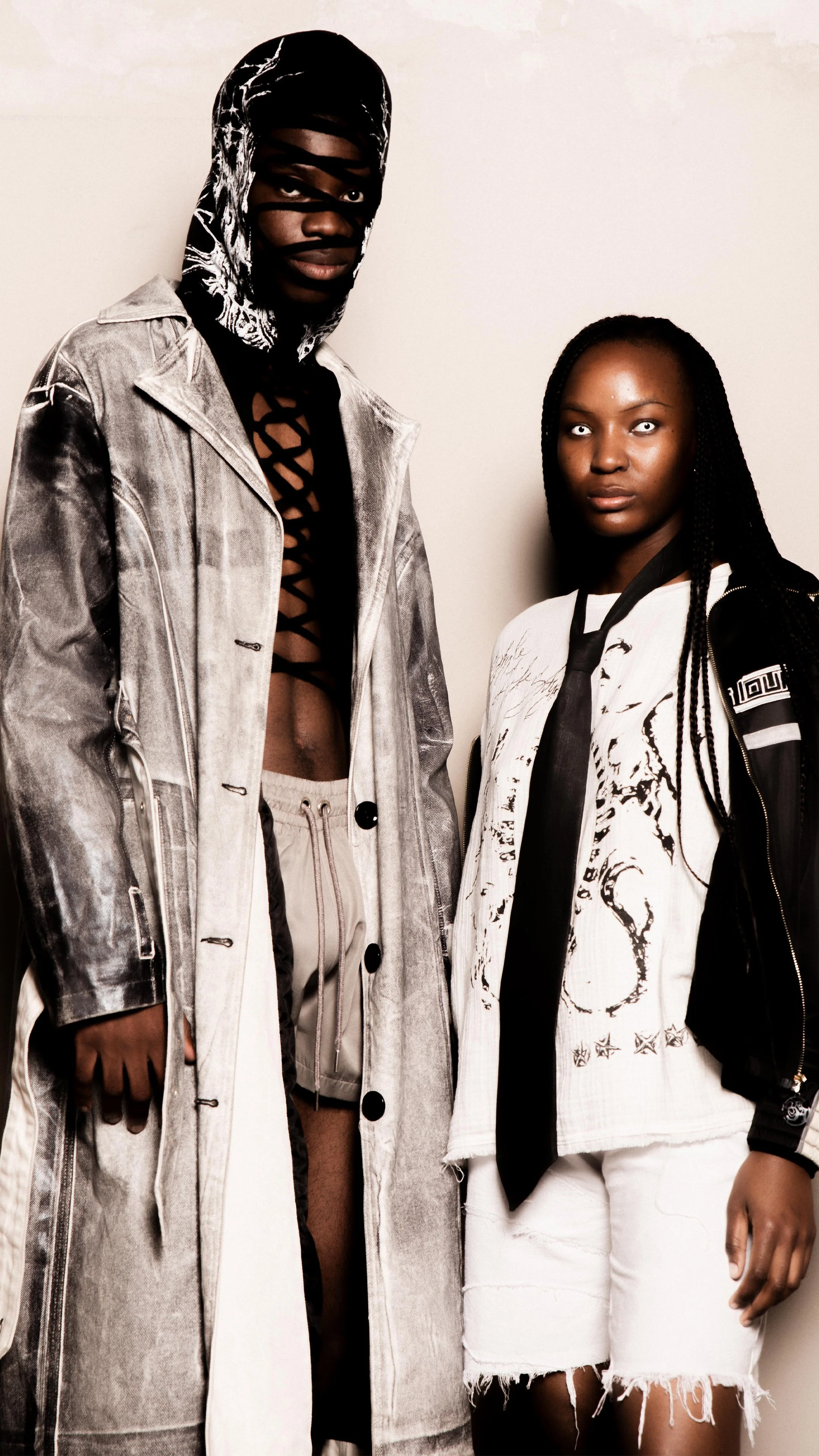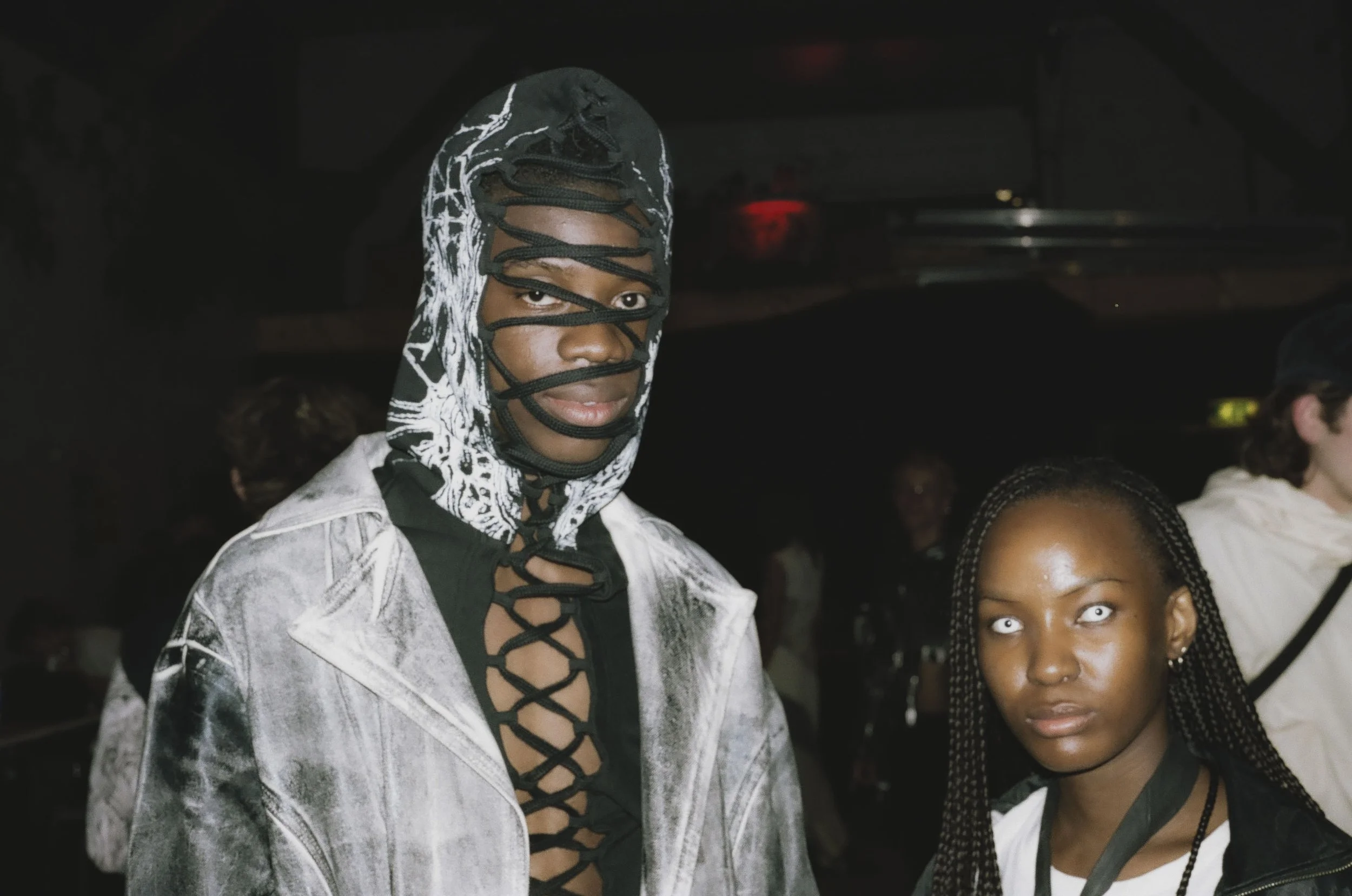Unleashing Creativity: A Q&A with FINE CHAOS Founder, Marc C. Møllerskov

FINE CHAOS
Life is a profound journey filled with encounters with inspiring and creative individuals who recognize the transformative impact of storytelling on community. Today, I'm excited to introduce you to Marc C. Møllerskov, the Creative Director and Founder of FINE CHAOS, an emerging fashion brand dedicated to pushing boundaries and embracing the duality of the upcoming generation.
Conversing with Marc has been an absolute delight, ranking among my favorite interviews. His boundless passion for both community and storytelling is nothing short of awe-inspiring. Marc's wellspring of inspiration flows from his personal quest to continually evolve into a better version of himself and his deep-seated desire to make the world a better place.
What sets Marc apart is his profound understanding of the art of storytelling. It's not about superficial glamour or glitz; FINE CHAOS is on a mission to build a community of creatives, inspiring them to harness their unique talents to create art. In Marc's vision, every form of artistic expression should weave a narrative that, in turn, inspires others to embark on their own creative journeys. But wait, there's more to this captivating narrative! During our conversation, Marc shared a fascinating insight into his creative process. He revealed that every one of his collections commences with the composition of a poem. From that initial poetic spark, he masterfully weaves a narrative that extends from verse to finished collection. This narrative isn't just about captivating the audience; it's meticulously crafted to evoke emotions and ignite inspiration, inviting everyone to immerse themselves in the unique experience that unfolds within the world of FINE CHAOS. FINE CHAOS's latest show brilliantly reimagined fashion as an art form. Recognizing the profound value of community, Marc and his dedicated team made a bold choice to schedule their show to coincide with Copenhagen Fashion Week. In a heartfelt campaign, they extended an open invitation to anyone and everyone who wished to be part of this captivating, emotionally charged narrative.
Regrettably, their show did not receive official approval for inclusion in Copenhagen Fashion Week, primarily because Marc has firmly positioned community at the forefront of his brand. What I find most compelling in this story is Marc's decision to wear a tank top boldly emblazoned with the words, "I was not invited to fashion week."
Fashion Week serves as a wellspring of inspiration for countless individuals worldwide. It's an event that should be accessible to all, for art is inherently emotional and collaborative. When did art become a realm where only the world's elite could partake, driven by vanity and clout?
The experience of the show was unlike anything I've ever witnessed. In a world where so many factors seem to divide us, there's a certain enchantment in coming together with like-minded individuals to appreciate art. I was swiftly drawn into a realm that prioritized a multi-sensory encounter. The installations, the music, the fashion, and, most importantly, the chance to connect with Marc - it all wove together seamlessly.
For me, this entire experience embodies a narrative I'm genuinely excited about. I'm continuously drawn to individuals who possess a profound sense of self, and their ability to express this authenticity becomes a wellspring of inspiration for others.
FINE CHAOS
In the realm of fictional storytelling, businesses have swelled to an excessively large scale, wielding power that surpasses even governments. Here, FINE CHAOS takes on a satirical role as the largest, somewhat 'sinister corporation,' asserting total control over civilization and imposing its own societal rules. To maintain order and subdue the populace, FINE CHAOS has devised a strict legal system with an integrated social credit system. This social credit system draws inspiration from real-world counterparts, and the collection serves as a commentary on the potentially problematic consequences of such a system in a world heavily documented by digital technology. The collection's socially critical elements are vividly portrayed through various artworks, each depicting the wearer in different social classes.
The experience of the show was unlike anything I've ever witnessed. I often gravitate toward elements in this world that rebel against the norm. In the realm of fashion, one's identity can wield significant influence over creativity and how creations are perceived. Intrigued by what I had learned about FINE CHAOS, I was eager to delve into Marc's vision of creating a brand free from the confines of gender.
While FINE CHAOS designs are intended for everyone, for all humans, Marc's grasp of the role of identity profoundly informs his design philosophy.
Joseph: What struck me when I read Ludvig Isaksen’s email was that FINE CHAOS is a brand crafting clothing for humans, all humans, and I found that truly remarkable. How did this idea come about?
Marc: I think it originated from my own experiments with clothing. I remember experimenting a lot during high school, that period between the ages of 15 to 18 when you're exploring various aspects of your identity. I played around with graphic clothing, like sweatshirts with bold statements and images, and I experimented with silhouettes. I wore tight leggings paired with baggy basketball shorts, perhaps influenced by A$AP Rocky during that time. I even tried trousers that looked like skirts when I stood in them. It was all about experimenting and discovering myself not in terms of my gender, but through my identity, and that's how I found my path as a designer.
When I remove gender from the equation, I don't feel the need to center the conversation around it, although gender is undoubtedly fascinating. From a societal perspective, it's more intriguing to focus on identity when it comes to design. I believe we should emphasize identity over gender. Anything that boosts the wearer's confidence and identity is far more beautiful than creating something hyper-masculine or hyper-feminine. For instance, the idea of putting a skirt on a man, in my opinion, isn't that interesting. What's truly captivating is hearing about the person wearing the clothing.
I have a saying: "I'm never done designing; the design is never complete until someone has put it on their body and is wearing it." For example, we have a satin shirt that, from a societal standpoint, might appear somewhat feminine because it's exceptionally elegant. We had a very expressive young adult wear it, someone with feminine traits, and it looked entirely different. Then, a business student chose it, and it took on a completely different character. That's the beauty of creating garments and exploring identity—the way a garment we create can evolve and become a form of expression for the wearer.
Designing becomes far more engaging when you're not merely crafting silhouettes. I always think of a person when creating a garment, regardless of their body size, hair, or other characteristics. I envision the person and think, "If this person were to wear a silhouette that truly enhances their character, how would they look?" From there, there are no constraints.
FINE CHAOS -Copenhagen Fashion Week
Joseph: So, just to clarify, you're not designing for a specific group of people; you're designing for identity?
Marc: Exactly, I am designing for identity.
As I've mentioned previously, the world views those of us who think outside the box differently. I'm perpetually inspired by individuals courageous enough to embrace both their own uniqueness and that of others. If you've made it this far, you'll thoroughly enjoy the remainder of the interview. Delve into Marc's creative process and his inspiring, community-driven brand, which captivates like-minded individuals from across the globe.
FINE CHAOS-I WAS NOT INVITED TO FASHION WEEK
Q: Can you share the inspiration behind the post-apocalyptic and hyper-futuristic theme of the SS24 Collection?
A: The theme is me analyzing where we are going as the human species. We don’t take of the earth, and think that technology is the solution to everything, more so, let it control our every day.
Q: The show featured a diverse lineup of models representing various sexualities, appearances, and ethnicities. How important is inclusivity for FINE CHAOS?
A: Inclusivity is in every part of the brand, we have no hierarchy internally or externally. When we have our events, which we do every one and a half month, it is most important that our crowd feels included and welcome. And as I pointed out in one of the previous questions - we need to use our privilege to highlight the minorities that by no means get the same chances in life as we do.
Q: What was the process of crafting bespoke upcycled outfits from scraps and discarded garments for the collection?
A: We started off with visiting Frelsens Hær, the non-profit organization that we are having a long partnership with, and then we select what to upcycle from the discarded products depending on which materials we need for which design. The sourcing process goes along with the design process, so we don’t waste or pick material we’re not going to use for new designs in the end.
FINE CHAOS
Q: Lina Rafn, the well-known Danish pop star, walked onstage wearing FINE CHAOS. How did this collaboration come about?
A: Lina is amazing. We met her through a mutual friend Brian Keith, and then from there the friendship started. She’s fucking cool and shows you can be a rockstar forever if that is what your mindset is.
Q: How did you conceptualize the conflict between nature and hyper futurism in the collection's garments?
A: Through the dualism of the collection, some outfits and styles are very inspired by the organic features of nature, for example in the tribal roots mesh top, and the hyper futuristic seen in both the full zipper look, and the new version of the club top. The shapes are sharp and confronting when it is related to the hyper futurism, and curved and more soft when it is nature inspired.
FINE CHAOS
Q: What motivated you to explore the potential issues of a social credit system integrated into a digitally documented world?
A: A curiosity to why we allow oppressing systems to exist and flourish, and to further present this for people that don’t know it exists, and create dialogues about it.
Q: Could you elaborate on the societal rules enforced by FINE CHAOS in the fictional storytelling of the collection?
A: The rules keep the society away from going against the rule, FINE CHAOS. That means demonstrating is illegal, public disturbance, but also stuff like not contributing to the society at all makes you lose points. I have created different categories, where we place the individuals from the societal score they have. The 3 main categories are: Outlaw, Working Class, and the Honorable citizen. The outlaws are the bottom of the credit system, meaning they have no access to education and public facilitations, such as libraries, communal centers etc. The working class is the middle category, and they’re following every rule of the legal system to climb the ladder. Then we have the Honorable citizens, who has access to everything, even drugs, alcohol and other addictive substances, that none of the other classes has access to.
Q: The collection features artworks portraying wearers in different social classes. How did you approach representing these diverse social scenarios?
A: I have created an all-around aesthetic for each category, meaning the upper category has artworks indicating their exclusiveness and wealth. The middle class have graphics indicating their strive towards climbing the ladder and doing EVERYTHING to please the power in position (FINE CHAOS). The bottom category, ‘The Outlaws’ are the rebellious ones, having characteristics that emphasize their suffering and despair, yet their will to riot against the system in control and its rules.
Q: How does the collection challenge societal norms and engage with social criticism?
A: By its messaging behind the garments, and the presentation of it. I would say, looking at the identities of the models in the show gives a good idea of what we stand for, and the clothes just further enhance the value set we have as a brand. We want to stand for minorities and a better fashion industry, that is our goal.
Q: What role does rebellion play in the vision of FINE CHAOS, and how is it reflected in the collection?
A: Rebellion is in our DNA, and not following the norms. The norms are boring, and through uproars with a mix of sarcasm, we are able to create meaningful dialogues
Q: Can you elaborate on the balance between ‘FINE' and 'CHAOS' in your brand's vision and how it is depicted in your pieces?
A: It is a representation of our whole design process, corny as it sounds, if the process isn't chaotic the product is not going to be meaningful. It is in the mess we find the details, by for example mixing fine construction with raw surface detailing and sometimes graphics to further enhance the messaging.
Q: What made you choose the SS24 Copenhagen Fashion Week as the platform to showcase this collection?
A: As it is taking place in Copenhagen, it is where we are based and where the majority of our community is.
Q: Could you share your experience working with the popular Danish band 'Kind Mod Kind' to create a unique soundscape for the runway show?
A: It was incredible. Being so privileged to work together with amazing artists like Kind mod Kind and getting an insight into the creation of music is deeply inspiring. The sonic landscape that we created for the show built the framework for how it was executed - the mix of pace between the models and the order of the models. I spent two days in the studio with them, and beforehand they had a general idea of where to go with the 20 minutes long soundtrack, I was just there to quickly finetune things to make it fit the storytelling 110%. They’re extremely talented and will no worries be one of the next Danish musical bands that will have international success.
FINE CHAOS
Q: The concept of community is central to FINE CHAOS. How do you cultivate an environment where people from all walks of life feel accepted?
A: By creating events that have inviting environments and inviting normally excluded people into the world of fashion. Then, at the events, meaningful conversations to form new relationships and inspiration for us, as the people attending are very diverse. A lot of people are arriving for the first time alone, and the following events they already have friends whom they met through the first time.
Q: Could you provide insights into your creative process of decorating the warehouse with decaying plants, speakers, and dimmed lights for the show?
A: I wanted the space to imitate the idea of ‘Nature forced to being kept alive’, which is why we ‘planted’ all the fake trees and branches near the ceiling of the room. The water curtain, which were placed behind the singer Julius from Kind mod Kind further cements the idea of that.
Q: What do you hope the audience takes away from the multisensory experience of the FINE CHAOS SS24 runway show?
A: That we’re fucking serious about what we’re doing.
Q: How do you foresee the impact of the collection's storytelling on the fashion industry's perspective on societal issues?
A: Hard to tell, as this industry just keeps on silencing important issues. We will keep being vocal about the issues, no matter our size. The fashion industry has to be inclusive
FINE CHAOS
Q: The collection's pieces were crafted from scraps and donated garments. How does sustainability align with FINE CHAOS's ethos?
A: We’re not sustainable, which no brand in the world is, but we fight towards having a circular value chain where every link is respected, and that everyone in it has equal rights and opportunities. Designing a garment is 30% of the process of making a collection, the rest lays in the sourcing, manufacturing, etc. Therefore, our manufacturers are just as if not more important than we are in the process of making a collection.
Q: What future directions do you envision for FINE CHAOS, considering the brand's distinctive approach to fashion and storytelling?
A: Introducing FINE CHAOS to the international market, further expanding and evolving the community in a healthy manner, and creating meaningful collections that are even better than the last one, in every single way.
Q: Finally, how would you summarize the essence of the SS24 collection and the unique narrative it conveys to the world?
A: A real portrait of where the human race are going, and how much we need an ego death, especially the people in control
In a world where society often prioritizes status and fosters divisions, it's truly remarkable to encounter individuals like Marc who remain dedicated to the altruistic essence of creating and sharing art. Take a pause, observe the narratives shaping your aspirations, and seek a community that inspires you to embrace the beautiful chaos that defines your uniqueness.

